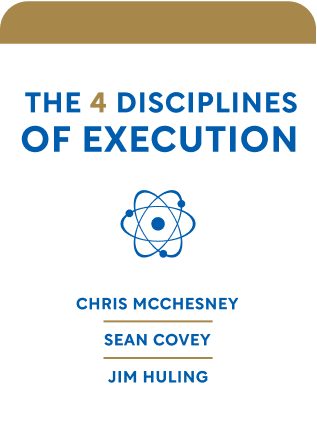

This article is an excerpt from the Shortform book guide to "The 4 Disciplines of Execution" by Chris McChesney, Sean Covey, and Jim Huling. Shortform has the world's best summaries and analyses of books you should be reading.
Like this article? Sign up for a free trial here .
What’s the best way to measure progress? Why are results not a good indicator of progress?
People generally track progress by measuring results. The problem with using results as an indicator of progress is that they don’t tell you how to improve. For example, if your goal is to save up a certain amount of money, your only measurement might be the number in your bank account: If it’s lower than your goal, you don’t learn anything about how to increase it. A better way of measuring progress is to track your efforts, rather than just the results.
Here’s why efforts are a better indicator of progress than results.
Discipline 2: Leverage
Discipline 2 focuses on getting from your current situation to the desired situation you defined in Discipline 1. McChesney, Huling, and Covey call this Discipline “leverage” because it’s about using your effort more effectively. Instead of trying to push a big, heavy goal directly, you channel your energy into related goals that you can actually influence, which in turn moves your company closer to its main goal (like using a lever to move a heavy rock instead of trying to lift it yourself).
The authors say one major problem with implementation is that people generally measure results. But results, or lag measures, are fixed—they can’t change once they’re measured, and they don’t give you any information on how to proceed.
That’s why McChesney, Huling, and Covey recommend that you find a way of measuring progress through efforts or lead measures, rather than just your results. So, if you’re trying to save money, you might measure how many hours you worked in a week and how much money you spent during that week (results). But if you focus on working more and spending less (increasing your efforts), you’ll naturally reach your goal of saving up money—this is much more effective than simply checking your bank account and hoping that it’s higher than before.
The authors explain that whatever lead measures you use must have two essential characteristics: It must be predictive (a change in the effort will yield a change in the results) and it must be influenceable (your team must be able to directly impact the measurement without relying on other teams).
So, how do you choose good effort measurements for a team or a company? The authors suggest using the same four steps that you used for goal setting.
- Brainstorm: Ask yourself what kind of changes would affect your team’s goal or goals. Consider things you’ve never done before, things you could improve, and things you’re doing badly that might hamper you. Look at successful companies’ measures for inspiration. Involve your team in the brainstorming.
- Appraise: Consider the list of effort measures you brainstormed. Which ones will have the most effect on your team’s goals?
- Check: Your effort measure must be predictive, maintainable, measurable, and impactful. It must have an effect on the team goal, be driven by the team rather than the leader, and it must be influenceable—your team needs to have control over it—so it shouldn’t depend more than 20% on another team.
- Write: The effort measure statements don’t have a strict format like a goal statement, but they should still be specific, start with a simple verb, and be concise. They should be clear about expectations—does the lead measure need to be done daily or weekly? How often, how much, and how well? Are they concerned with team or individual performance?
| How Athletes Do Their Best The focus on effort, rather than results, echoes the mindset that many athletes use to consistently play at their best. According to sports psychologist Jim Taylor, focusing on results (like winning or losing the game) is ineffective for a couple of reasons: Worrying about results (especially bad results) makes you nervous, which can stop you from performing your best. The results are largely out of your control—they depend on your teammates, your opponents, and to some extent on random chance. Therefore, Taylor instead suggests having these three goals: Pre-game: Prepare. Do everything within your power to be as ready for the game as you can possibly be. In-game: Give your all. Don’t settle for playing “well”—play your absolute best. Go all-out, take chances, and push yourself to the limit. Post-game: Regret nothing. No matter what the outcome was, know that you did your best. Rather than wasting time and energy regretting what happened in the last competition, start preparing for the next one. All of these same principles apply to business as well: Focusing too heavily on results can lead you to make short-sighted, reactionary decisions that prevent your company or team from doing its best. It’s better to prepare as best you can for whatever challenge you’re facing, give your all, and then start getting ready for the next challenge. |

———End of Preview———
Like what you just read? Read the rest of the world's best book summary and analysis of Chris McChesney, Sean Covey, and Jim Huling's "The 4 Disciplines of Execution" at Shortform .
Here's what you'll find in our full The 4 Disciplines of Execution summary :
- The 4 disciplines that can make any strategy a successful reality
- Why a great plan falls apart when you don't think adequately about execution
- The 6 steps you need to scale the 4DX model across an entire organization






